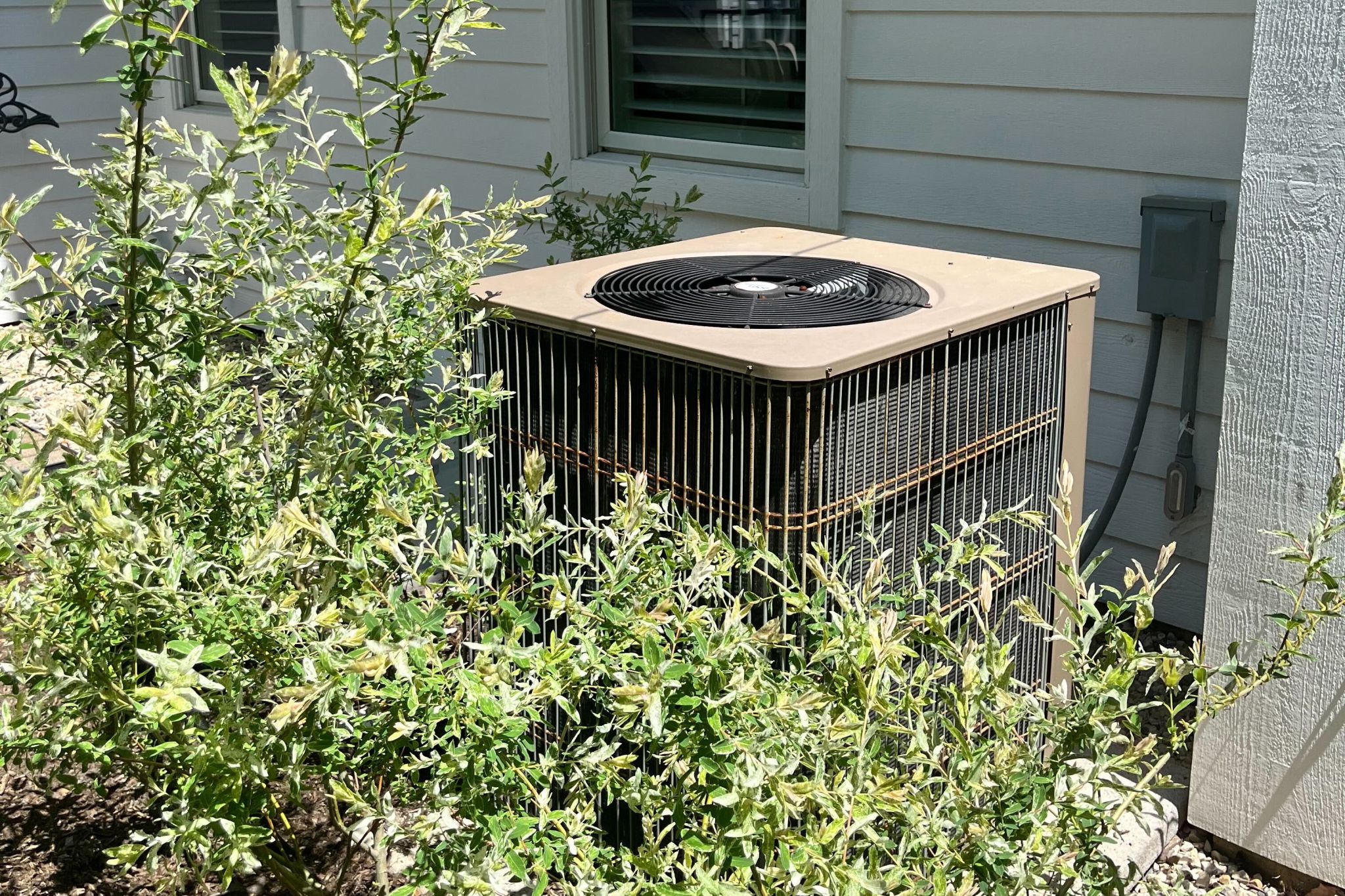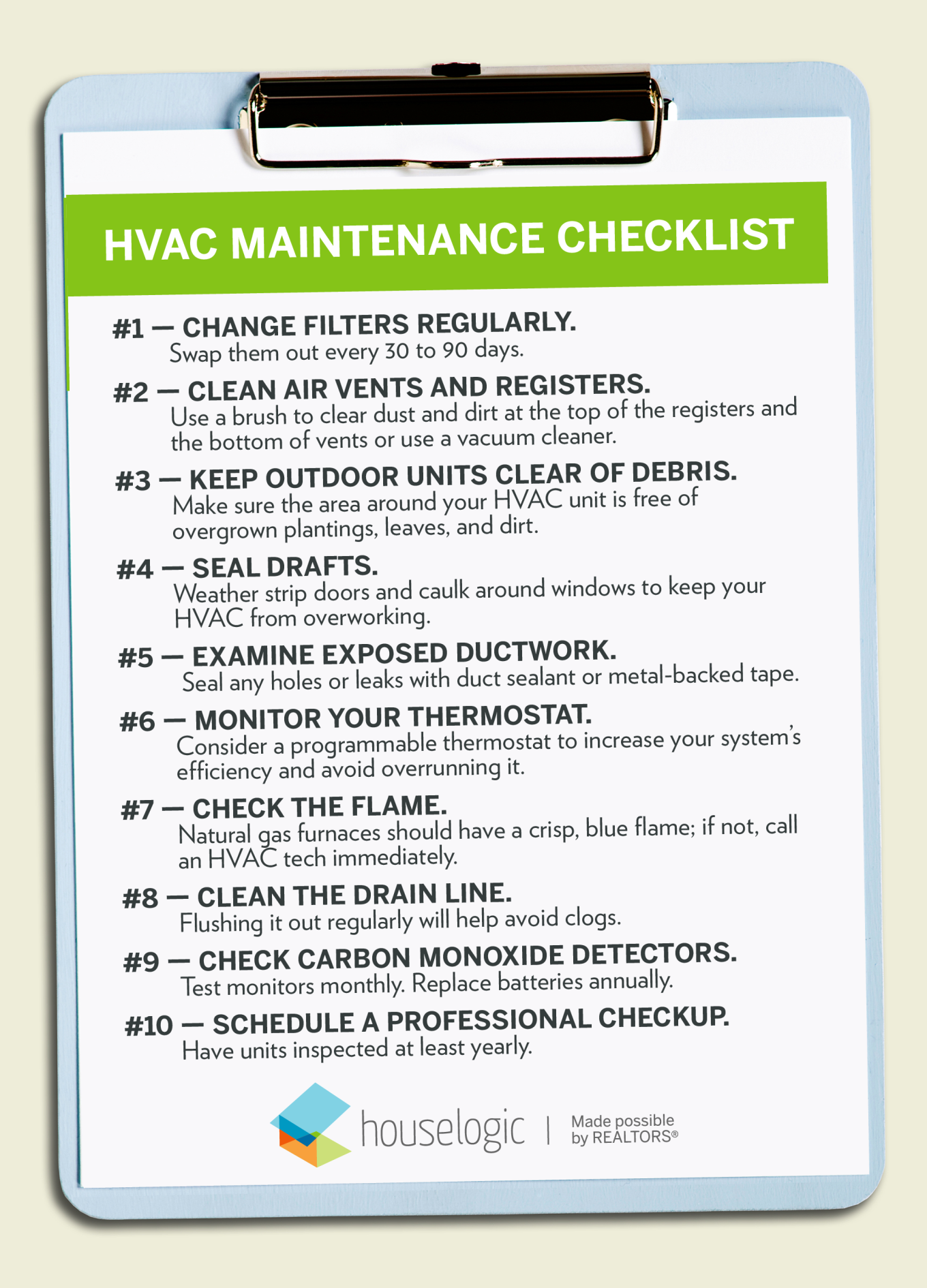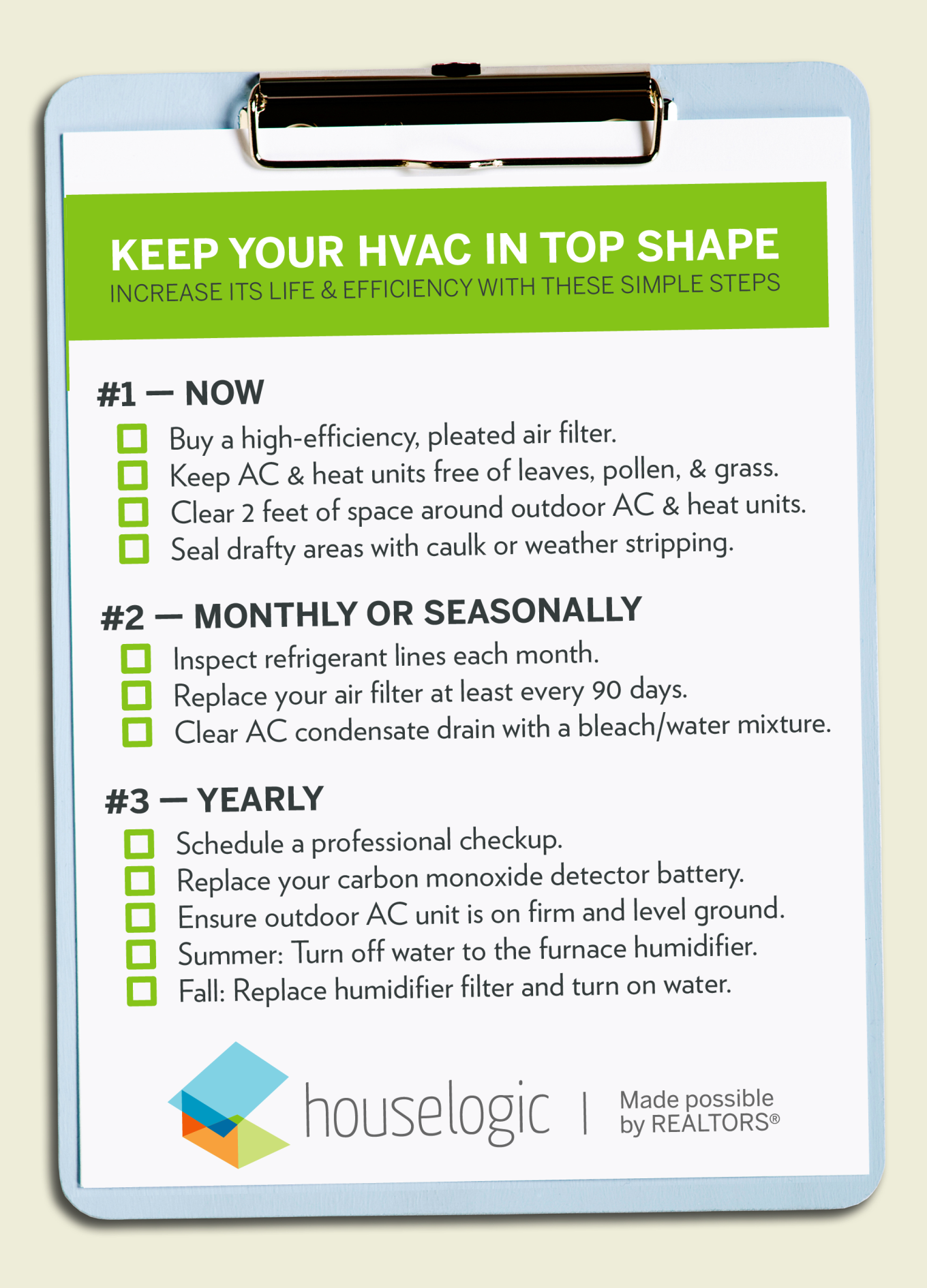Published on Aug. 21, 2024
Heating and cooling problems can cause discomfort and sky-high utility bills on top of inconvenience. Keep your home’s HVAC in tip-top shape.

Weather extremes are putting more pressure on homeowners’ heating, ventilation, and air conditioning systems in keeping homes cool during the summer and warm in the winter. That’s one reason it’s more important than ever to keep up your HVAC maintenance. But that’s not always top of mind for homeowners.
The HVAC often runs in the background, which means you likely don’t give it much thought — until it breaks down, that is. And that can happen at the worst times. Forty-two percent of homeowners say they’ve experienced HVAC system issues during heat waves, according to a new survey from Hippo, a home insurance company. “A failing HVAC system during a scorching summer can lead to discomfort, costly utility repairs, and even health risks for more vulnerable populations,” says Courtney Klosterman, a home insights expert at Hippo.
But many costly HVAC disasters can likely be prevented. For example, fewer than half of homeowners, 47%, say they’ve had HVAC servicing within the last year. Yet, experts advise annual HVAC servicing to avoid expensive repairs. Even fewer homeowners, 32%, say they’ve done basic cleaning and HVAC maintenance to help prevent heat-related home damage, according to the Hippo survey.
HVAC Maintenance Checklist
To be fair, many homeowners may not be sure what to do. Refer to this checklist regularly to make sure you’re doing 10 activities that will keep your HVAC humming.
- Change filters regularly. Swap them out every 30 to 90 days.
- Clean air vents and registers. Use a brush to clear dust and dirt at the top of the registers and the bottom of vents or use a vacuum cleaner.
- Keep outdoor units clear of debris. Make sure the area around your HVAC unit is free of overgrown plantings, leaves, and dirt.
- Seal drafts. Weather strip doors and caulk around windows to keep your HVAC from overworking.
- Examine exposed ductwork. Seal any holes or leaks with duct sealant or metal-backed tape.
- Monitor your thermostat. Consider a programmable thermostat to increase your system’s efficiency and avoid overrunning it.
- Check the flame. Natural gas furnaces should have a crisp, blue flame; if not, call an HVAC tech immediately.
- Clean the drain line. Flushing it out regularly will help avoid clogs.
- Check carbon monoxide detectors. Test monitors monthly. Replace batteries annually.
- Schedule a professional checkup. Have units inspected at least yearly.

DIY HVAC Maintenance Tips
Many of the HVAC maintenance tasks that will keep your system operating efficiently are DIY, and these tips will make the process easier.
Change HVAC Filters Regularly
“Air filters keep dust and particles from getting into your ductwork and HVAC,” says Glenn Wisemen, sales manager at Top Hat Home Comfort Services in Ontario, Canada. “If they are covered in dust, the air will filter through your furnace much slower, making your system more inefficient.” Allergens also can build up, affecting your home’s indoor air quality. High-efficiency pleated air filters (also known as MERV 11 or 12 filters) can capture the smallest particles, filtering out bacteria, viruses, dust, pollen mold, pet dander, and more. Angi recommends changing filters according to this schedule:
- No pets: Every 90 days
- With pets: Every 60 days
- For allergies: Every 30 to 45 days
Keep HVAC Units Clean
Likewise, vents, registers, and condenser and evaporator coils need to be kept clean to prevent a buildup of dust and dirt that could increase energy costs and even reduce your HVAC’s lifespan. AC maintenance tips include keeping outdoor units clean and free of any obstructions. Make sure shrubs or trees near your HVAC unit are at least two feet away to allow adequate flow around the condenser, according to Energy.gov.
Seal Out Drafts and Keep Heat or Cool Air In
Install weather stripping on the top of doors to seal out drafts and prevent warm or cool air from escaping, Wisemen suggests. “Caulk around windows, floors, and other potential sources of heat leakage to keep more money in the bank by reducing your heating bills.” This inexpensive upgrade can lower your costs and help your furnace and AC units operate more efficiently, he adds.
Check Thermostat and Consider a Smart Version
Monitor your thermostat to make sure it’s working properly and consider upgrading to a programmable or smart thermostat to increase your unit’s efficiency and avoid overrunning your unit, suggests Anees Jarral, cofounder of Cielo WiGle Inc., a smart-tech HVAC firm, in Seattle. “Whether you have a central HVAC system or mini-splits, pairing your system with a smart thermostat can offer numerous benefits.” For example, it can enable you to set weekly schedules automatically and prevent energy waste, gain remote control and monitoring, and receive energy usage reports.
Examine Ducts for Leaks and Holes
Ducts help distribute the air throughout the house, but up to 30% of the air that moves through ducts can get lost because of leaks, holes, or poorly connected ducts, according to Energy Star. Signs of faulty ducts: rooms that are difficult to heat or cool, tangled or kinked flexible ducts, stuffy rooms, and high summer or winter utility bills. Most ducts are concealed behind walls or ceilings, so you may only be able to examine exposed ones in the basement, attic, or garage. Seal any leaks or holes with duct sealant (mastic) or metal-backed (foil) tape. Also, make sure connections at vents and registers are well-sealed where they meet the floors, walls, and ceiling. If needed, contact a technician to help seal leaky ducts.
Clean the HVAC Drain Line
HVACs have an AC condensate drain line that can become clogged with built-up sediment, algae, or mold. Some AC units have sensors that may alert you when they detect clogs. If you don’t have those, telltale signs include full drain pans, water around the indoor unit, an AC that won’t turn on, or a musty odor when running the AC. Clean the drain line every three months with a mixture of bleach and water.
Check Carbon Monoxide Detectors
HVAC systems are a common source of the potentially fatal, odorless gas known as carbon monoxide, particularly when units have been poorly maintained. Your HVAC system can even spread carbon monoxide further around your house. Without a detector, you likely won’t know if CO is present. Replace CO monitor batteries and run monthly tests to make sure monitors are working properly.
Assess the Flame Color on Natural Gas Furnaces
On natural gas furnaces, check the color of the unit’s flame. It should be a crisp, blue color. If the flame appears yellow, orange, or green or pops of these colors, contact an HVAC tech immediately. It may indicate a combustion problem, which can lead to rising amounts of carbon monoxide.
Schedule a Professional HVAC Checkup
Experts advise having an HVAC system inspected by a professional at least once a year to prevent costly issues or breakdowns. The average HVAC inspection costs $300. That’s an investment, but an HVAC replacement could cost 25 times that amount. So, the inspection may be money well spent. “If you live in an area susceptible to heat waves, comprehensive inspections and cleanings could potentially help you save on your electric bill and reduce the strain on your cooling systems,” Klosterman says.
Watch for These Common HVAC Problems
Red flags can signal that your HVAC isn’t running properly. Those symptoms include unusual sounds and odors, inconsistent temperatures, frequent cycling, and poor airflow. HVAC experts say the following six are the most common problems they spot:
- Refrigerant leaks: This can reduce cooling power and make your home less comfortable and lead to higher utility bills, Wiseman says.
- Pilot light off: Furnaces may not be getting enough gas if the pilot light isn’t on. It could be a sign of a gas issue, faulty thermocouple (a device used to measure temperatures), or even cracks in the heat exchanger.
- Thermostat malfunctions: Inconsistent temperatures throughout the home, frequent cycling on and off (or short cycling), and poor airflow could point to problems with the thermostat, blower motor, or clogged filters, Wisemen says. “Whether it’s faulty wiring or an outdated model, a bad thermostat can make your system turn on and off at the wrong times or not reach the right temperature.”
- Gas leaks: Beware of any smells of rotten eggs inside the home. It could indicate a sulfur gas leak in your HVAC system. If you suspect a gas leak, vacate your home immediately and call for help.
- Clogged filters: Dirty or clogged HVAC filters “force the system to work harder, leading to wear and tear, overheating, or even a total shutdown,” Wiseman warns.
- Aging units: HVACs typically last 15 to 25 years, according to the “Study of Life Expectancy of Home Components” conducted by the National Association of Home Builders and Bank of America Home Equity. (The average lifespan for furnaces is 15 to 20 years; heat pumps, 16 years; and air conditioning units, 10 to 15 years.)
If you spot problems, contact a technician for HVAC servicing. Find companies that specialize in HVAC servicing for repairs or installation. Check online directories for heating and cooling companies such as the Better Business Bureau, Yelp, or Angi, or ask neighbors or a real estate agent for recommendations. Be sure to read online reviews of any HVAC service companies you’re considering.
The Costs of Ignoring Home HVAC Maintenance
A new HVAC system costs an average $7,500 and possibly upward to $12,500, depending on the type and size of unit. An HVAC repair, on the other hand, could cost a fraction of that, averaging $350 nationwide, although that could vary depending on what needs to be done (from as low as $100 up to $3,000), according to Angi.
Don’t just expect your homeowners insurance to pay up if something goes wrong. Most standard homeowners insurance policies do not cover claims when an HVAC unit is damaged because of general wear and tear or poor maintenance, according to Hippo.
Since HVACs are big-ticket investments, they can have an impact in real estate. You’ll need to disclose if the HVAC isn’t working properly, and a home inspector will likely check it for a home buyer when you sell. If you have a new HVAC, that’s a strong selling point, so tout it when you sell. It could raise your home’s value by up to 7%, particularly when installing an energy-efficient system, according to Angi.
Skimping on HVAC maintenance can be costly. But following simple steps and tips can save on your utility bills and repair costs while keeping you a lot more comfortable at home.
HVAC Maintenance Schedule


Recent Comments